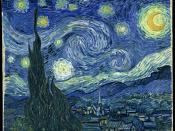IntroductionMood disorders encompass several types of disorders. "The essential feature of these mental disorders also referred to as effective disorders is persistent or episodic exaggeration of mood state (American Psychiatric Association, 1994)." "Two of the most familiar mood disorders are depression and bipolar disorder, also known as manic-depressive illness (Mood Disorders, 2006)."Bipolar Disorder DescriptionIndividuals with Bipolar Disorder experience severe mood swings disrupted by periods of normal behavior. Bipolar disorder has a tendency to run in families. On-set is usually in the mid-twenties and continues throughout life. Without management, individuals who have bipolar disorder often experience distressing life events such as divorce, unemployment, drug and alcohol abuse, and suicide (Mood Disorders, 2006).
Bipolar Disorder has the following symptoms: "Mania-expansive or irritable mood, inflated self-esteem, decreased need for sleep; increased energy; racing thoughts; feelings of invulnerability; poor judgment; heightened sex drive; and denial that anything is wrong.
Depression-feelings of hopelessness, guilt, worthlessness, or melancholy; fatigue; loss of appetite for food or sex; sleep disturbances, thoughts of death or suicide; and suicide attempts (American Psychiatric Association, 1994)." Bipolar disorder and depression may differ in both length and level of severity.
Bipolar disorder may have extended periods of remission among occurrences. Everyone can be lulled into a false sense of security. This promotes denial of the disease and early prescription termination. Some persons who are typically rather responsible may momentarily lose their accountability during the premature stages of a critical episode. (Bipolar Disorder and Family Therapy, 2007).
DiagnosisMost practitioners agree that Bipolar Disorder is a genetically based psychological illness. However, no medical analysis exists to identify the disease. This psychological disease frequently is undiagnosed by the individual whom has it, family, friends, and sometimes doctors. The initial step in analyzing this disorder is to obtain a...


